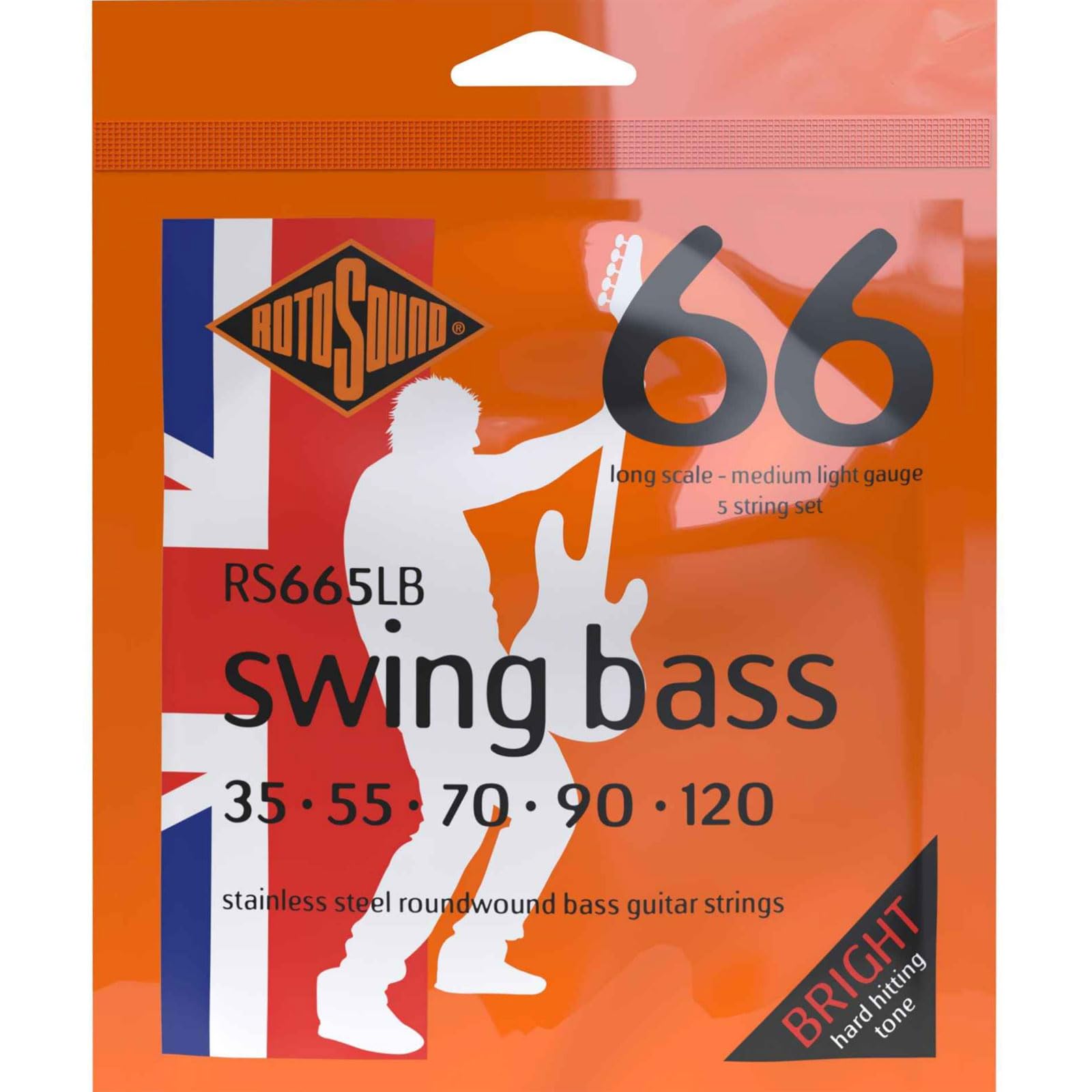
Rotosound RS665LB Swing Bass 66 Stainless Steel 5 String Bass Guitar Strings (35 55 70 90 120)
$42.65
Frequently Asked Questions
- Q: What are the gauges of the Rotosound RS665LB Swing Bass 66 strings? A: The Rotosound RS665LB Swing Bass 66 strings feature gauges of 35, 55, 70, 90, and 120.
- Q: What type of music are these bass guitar strings suitable for? A: These stainless steel strings are ideal for a variety of music genres, especially rock, due to their bright and punchy sound.
- Q: How do I install the Rotosound RS665LB strings on my bass guitar? A: To install, remove the old strings, thread the new strings through the bridge and tuners, and tune them to pitch gradually while stretching them gently.
- Q: Are these strings suitable for beginners? A: Yes, the Rotosound RS665LB strings can be suitable for beginners who want a high-quality sound as they develop their playing skills.
- Q: What is the difference between roundwound and flatwound strings? A: Roundwound strings, like the Swing Bass 66, have a textured surface that produces a brighter tone, while flatwound strings have a smoother surface, yielding a warmer, more muted sound.
- Q: How do I maintain the longevity of my Rotosound bass strings? A: To maintain your strings, regularly wipe them down with a clean cloth after playing and store your bass in a cool, dry place.
- Q: What are the benefits of using stainless steel strings? A: Stainless steel strings offer durability, corrosion resistance, and a bright tonal quality that enhances the overall sound of the bass.
- Q: Can I use these strings on any bass guitar? A: The Rotosound RS665LB strings can be used on any 5-string bass guitar that accommodates the specified gauges.
- Q: What is the sound quality of the Rotosound RS665LB strings compared to other brands? A: Many players find that Rotosound RS665LB strings provide a bright and punchy sound that stands out, often preferred for rock and progressive music.
- Q: How often should I change my bass guitar strings? A: The frequency of changing strings depends on usage; generally, players change them every few weeks to maintain optimal sound quality.
